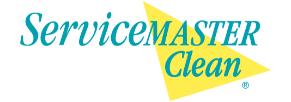.jpeg) When performing janitorial services in healthcare facilities, it is crucial that the janitorial staff follows proper safety precautions. These environments can foster infectious diseases and there is a high transfer risk when cleaning bodily fluids. We have created a detailed patient centered cleaning process to ensure our product meets the unique needs of these facilities. To best protect and serve healthcare clients, it is important to be thorough, pay attention to detail, and heed the following steps.
When performing janitorial services in healthcare facilities, it is crucial that the janitorial staff follows proper safety precautions. These environments can foster infectious diseases and there is a high transfer risk when cleaning bodily fluids. We have created a detailed patient centered cleaning process to ensure our product meets the unique needs of these facilities. To best protect and serve healthcare clients, it is important to be thorough, pay attention to detail, and heed the following steps.
- Trash Services
- All trash in the facility should be addressed first. During this initial process, any large debris on the floor should also be disposed of. The trash can liner doesn’t require replacement unless it is torn or soiled. If replacement is necessary, the bag should be twisted and knot tied in order to seal any liquid inside the bag.
- Spot Cleaning
- Employees should utilize microfiber cloths pre-treated with sanitizer to address any soiling found during the initial room walk through and trash services. Many companies choose to utilize different colored cloths to signify different cleaning products.
- Dusting
- Dust can have a big effect on the appearance and cleanliness of environments. Upon entering a room, staff should begin working to the area above and to the right of the entrance and work counter clockwise around the room. High surfaces are those above shoulder height including light fixtures and ventilation covers should be focused on first. Then, low dusting should be performed to address areas below the waste such as chair legs and AC units. For maximum dust removal, units with backpack vacuum are available as well as extension poles.
- Vacuuming
- It is important to vacuum surfaces first in order to loosen the dirt before mopping.
- Restocking Supplies
- Restrooms, public spaces, exam rooms, etc. should be fully stocked with the proper supplies such as towels, hand sanitizer, and tissues.
- Disinfecting Surfaces
- Patient care areas are the top priority as they are more likely to foster disease and infections. They should be addressed with the before mentioned microfiber cloths. It is important to replace these cloths in case of any streaking or soiling. Surfaces such as monitors and lab equipment should not be cleaned by janitorial team members unless explicitly stated. In that case, users should follow manufacturers’ specific instructions.
- Mopping
- In our years of experience, our team members have produced the cleanest environments while using flat mops. Janitors should begin in the back of the room and mop in an “S” stroke towards the door. The mop must remain in the same position as debris may be spread during turning or reversing. When the microfiber mop head is visibly soiled it should be replaced.
- Inspection
- Completing a final walk through gives cleaning staff the chance to ensure each task has been completed.
During this patient centered cleaning process, janitorial team members are instructed to wear gloves and other PPE. If additional PPE is necessary, signs will be posted to alert workers. If these workers come across an unknown substance, it is important that no action should be taken until it is identified. Following these processes will ensure that your team remains safe during the healthcare cleaning process and produces the most cleanly environment. Learn more about the special precautions workers should take in last week’s
blog.

